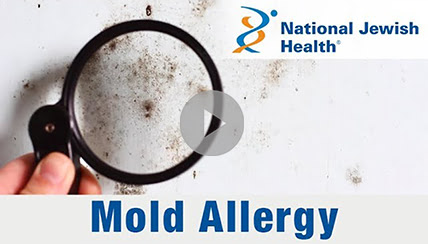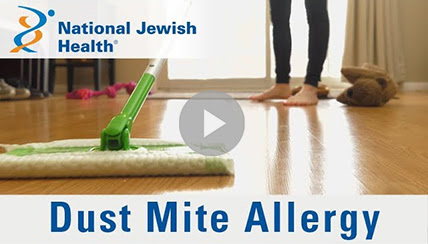What You Need to Know About Dust Mite Allergy
How does dust mite allergy affect people with allergies and asthma? National Jewish Health Allergist Flavia Hoyte, MD, explains what you need to know about dust mite allergy.
Transcript
Dust allergy actually is an allergy to the dust inside the home, and the dust inside the home actually will contain any of the, what we call, perennial allergens.
So, cats, dogs, if you have those pets that will be involved in dust, but then importantly dust mites are also included in dust.
Dust mites love bedding, so they love being in the bedroom, carpets, rugs, drapery.
So it's very important to keep tabs on where the dust mites might be, and try to prevent them because they can cause problems all year round in a place where we spend a lot of time, which is our bedroom.
So, dust mite allergy can cause symptoms of the nose, the eyes, and particularly of the lungs in somebody who has allergic asthma.
So your typical allergy symptoms, nasal itchiness, runny nose, post nasal drip, congestion, and then again importantly a flare of somebody's asthma if they're dust mite allergic.
So, testing for dust mite allergy involves skin prick testing, which is putting a drop of extract on the skin, and then poking through it.
We also have intradermal testing for more subtle allergy, where a little bit of the extract will be actually placed under the skin.
Then there's specific IGE testing, which is a blood test looking for IGE which is the allergic antibody and specific for dust mites.
Treatment for dust mite allergy generally involves limiting exposure to the dust mites.
So, dust mites tend to love bedding and upholstered furniture, rugs, and carpeting.
So trying to limit those in the home, and trying to change to hardwood floor if at all possible, leather furniture.
In terms of the mattresses and pillows where dust mites like to live, we generally recommend wrapping them all the way around with a finely woven cover, which can be found, purchased commercially.
On the mattress, and on the pillow, and make sure that that cover zips up and really tries to keep the dust mites away from the individual's face.
In addition, there is dust mite allergen immunotherapy, so allergy shots.
Either traditional shots, which can be mixed with the other allergens, and now there's a newly approved sublingual immunotherapy as well, a tablet for dust mite allergy.
Related Videos
Related Health Insights and News
Want to use this on your website? Fill out the content usage request form and then copy this code: https://youtu.be/q__Sp_2HCW8















-(1).JPG?lang=en-US&ext=.jpg)

.png?lang=en-US&ext=.png)


.JPG?lang=en-US&ext=.jpg)






